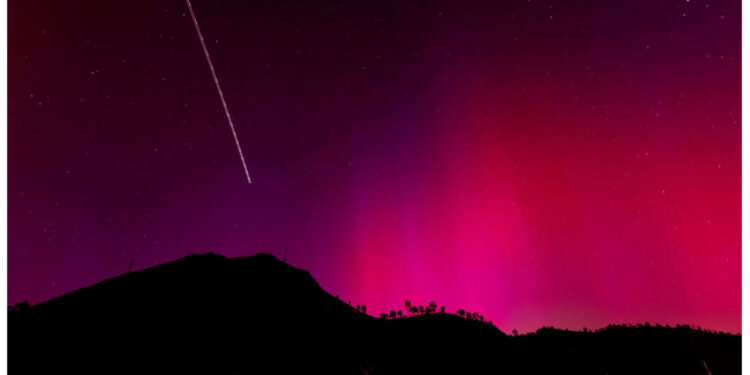The greatest geomagnetic storm in more than 20 years hit Earth on Friday, creating radio blackouts and extending the northern lights to the southern United States. On Monday, officials warned that the storms were not yet over.
Early Monday, NOAA’s Space Weather Prediction Center issued a G3, or “strong,” geomagnetic storm warning until 2 a.m. ET. The agency warned that moderate to powerful geomagnetic storms are “likely” on Monday and minor storms on Tuesday, despite the absence of heavier storms and the expected “gradually waning” conditions throughout the day.
The center predicts “high levels of solar activity,” with the possibility of more solar flares, or bursts of electromagnetic radiation from the sun.
The report coincided with the detection of another X-class solar flare. X-class flares are the most powerful of these solar explosions, with the most recent classified as “moderate.”
“Flares of this magnitude are not common,” the center stated. “Users of high-frequency (HF) radio signals may experience temporary degradation or complete loss of signal on much of the sunlit side of Earth.”
Large portions of the sunlit side of Earth may have experienced hour-long high-frequency radio blackouts on Sunday due to a separate and larger X-class flare.
The flares came from Sunspot Region 3664, a large area of the sun that was responsible for the majority of the flares and coronal mass ejections (CMEs) that contributed to the weekend’s severe geomagnetic storm. That location is still “the most complex and active on the disk,” according to NOAA. According to Space.com, the region is so huge that anyone wearing eclipse glasses can see it from Earth. It is around 124,000 miles across.
That region has been active alongside Regio 3663, which, when paired with 3664, is “magnetically complex and much larger than Earth,” according to NOAA.
On Monday, scientists predict that CMEs, or massive explosions from the sun’s atmosphere containing plasma and magnetic fields that cause geomagnetic storms, will continue, boosting G3 activity.
NOAA predicts that on May 14, “continuing but weaker CME influences will decrease responses down to unsettled G1 (minor) levels.”
We also forecast mild solar radiation storms and more radio blackouts around the same timeframe, but depending on the solar flares that occur, we may classify some of those as “strong” incidents.










